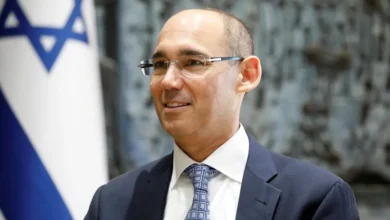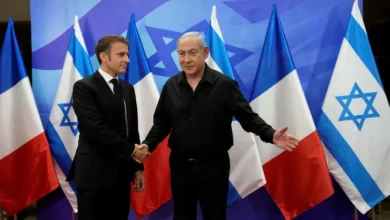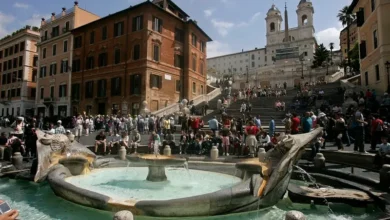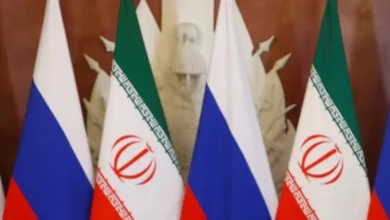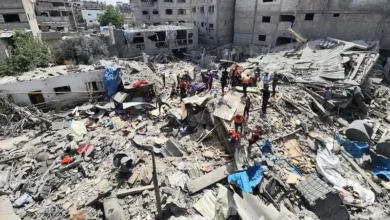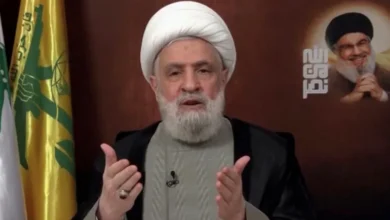What’s the UN’s new ‘Pact for the Future’, and why did Russia oppose it?

The United Nations General Assembly (UNGA) has adopted an ambitious pact that aims to make the organisation more relevant and effective on the global stage in the 21st century amid mounting criticism over its failures to stop wars and hold to account those who violate its charter.
Russia and Iran were among seven nations to oppose the “Pact for the Future”, but they failed to prevent the document from proceeding during the summit that ran on Sunday and Monday.
Let’s take a look at the centrepiece document of the annual gathering in New York, the lofty goals it aims to achieve for the global community, and why Russia argued no one is fully satisfied with the text.
What’s the Pact for the Future?
The UN describes the pact as a “landmark declaration” pledging action towards an improved world for tomorrow’s generations.
The lengthy text adopted by the 193-member UNGA includes a pledge to move faster towards achieving the UN’s Sustainable Development Goals (SDGs) and the Paris Agreement commitments on climate change. It speaks of addressing the root causes of conflicts and accelerating commitments on human rights, including women’s rights.It includes two annexe documents, called the Global Digital Impact, dealing with regulating artificial intelligence (AI), and the Declaration on Future Generations, which pushes for national and international decision-making to focus on securing the wellbeing of generations to come.“We are here to bring multilateralism back from the brink,” Secretary-General Antonio Guterres told world leaders gathered at the UN headquarters on Sunday. “Now it is our common destiny to walk through it. That demands not just agreement, but action.”
The pact covers a range of topics, with differing levels of ambition, and different UN forums and agencies will be responsible for following up on different topics, according to Richard Gowan, UN director at the Crisis Group.
“Some of the proposals are quite specific, like a request for the Secretary-General to review the state of UN peacekeeping operations. Others, such as a promise to work towards nuclear disarmament, are sadly more rhetorical flourishes than concrete proposals,” he told Al Jazeera.
“Nonetheless, it is important that UN members work out a proper implementation plan for the actionable parts of the pact, as we have often seen world leaders sign off on fine-sounding pledges at the UN and then fail to follow through on them.”
Does the pact spell out how it’ll make the world better?
Not really. As is often the case with UN resolutions and pledges, the Pact for the Future is packed with lofty goals and commitments but is thin on actual, realistic steps that the body can take to implement its own vision.
- The document asserts that nations “will end hunger and eliminate food security”, address global financing and investment gaps, commit to a fair multilateral trading system, achieve gender equality, protect the environment and the climate, and protect people affected by humanitarian emergencies. But it is silent on how the UN and its members will do this.
- As Israel’s war on Gaza, the Russia-Ukraine war and the civil war in Sudan continue to claim lives, it recommits the UN to support the International Court of Justice (ICJ). But at a time when Israel has made it clear that it will not allow the UN court to affect its devastating war, in which more than 41,000 people have been killed in Gaza, the new pact does not spell out how the body plans to get members to follow its rules.
- The pact sets out a promise to revitalise obligations and commitments on disarmament of nuclear and biological weapons, “renew trust in global institutions” by making them more representative and responsive, and promote and protect human rights, including through fighting racism and xenophobia. Again, however, these are mere promises in the text.
- Reflecting growing dissatisfaction with deadlock and lack of global representation in the UN Security Council (UNSC), the document pledges to “redress the historical injustice against Africa as a priority” and “improve representation” for Asia Pacific, Latin America and the Caribbean. But the document makes no mention of how the UN will speed up reforms the Global South has been demanding for years.
- The Pact of the Future adds that it wants to accelerate the reform of the international financial architecture, bolster response to global shocks, and improve cooperation on exploring outer space and preventing an arms race there. But many of the countries leading the space race are also permanent members of the UNSC with veto powers that insulate them from any meaningful criticism.
- As many UN resolutions go unheeded, the pact pledges to “strengthen the response” of the UNSC and “revitalise” the work of the UNGA while strengthening the overall UN system, including the Economic and Social Council and the Peacebuilding Commission. How? No mention, again.
Gowan said many UN members believe UNSC reform is essential after the wars in Gaza and Ukraine, but actually cutting a deal would be difficult, as will be reforms of the international financial institutions.
“I think that overall developing countries had a bigger role in shaping this pact than they did in some previous UN reform processes, but the US still effectively defended its red lines on issues like the international financial system,” he said.
“The pact is far from perfect, and many people may feel it lacks the depth and urgency required to deal with the global polycrisis. But I think that we should be grateful diplomats could work out a deal at all in the current bleak environment.”
